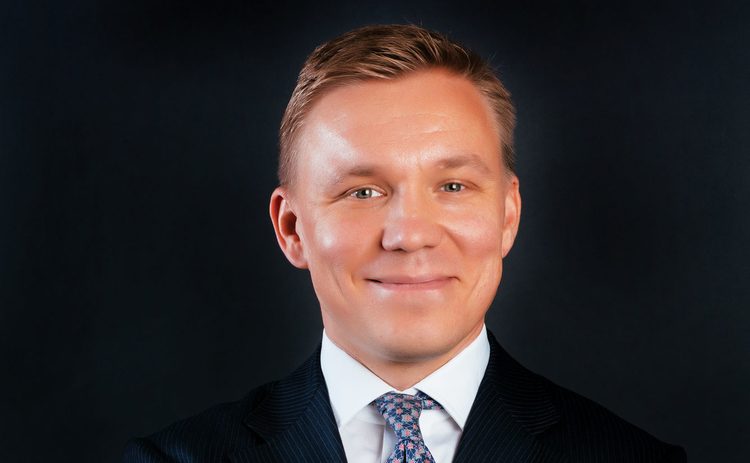
Mikko Rusi, Head of Commodity Derivatives, Asia Pacific at BNP Paribas
By the end of 2017, buoyancy seemed to have returned to commodity prices on the back of healthy global economic growth and they were projected to continue to climb into 2018.
That was before US president Donald Trump launched a trade war with the rest of the world, substantially weakening demand for certain commodity classes, such as base metals, and sending prices into a tailspin.
While the rise in commodity prices at the end of 2017 and into 2018 was welcome news for commodity producers, and indeed fuelled investment in new production sites, recent volatility in the market – caused by Trump’s trade war and a strengthening of the US dollar – has unsettled firms. Now they are anxious about protecting their positions.
Markets too have exhibited extended periods of low correlation among commodities, adding to the nervousness. For example, while energy prices were rallying at the start of the year, metal prices remained suppressed.
Against this backdrop, BNP Paribas has stood strong, leveraging off its global franchise to deliver meaningful support and advice to its clients, and using its own in-house expertise to bring rapid hedging solutions to market.
One finance manager at a steel company based in Asia says: “What I have been particularly happy with are the commodity reports that BNP Paribas provided us with last year, showing the positioning they had taken for us. They have been able to give us a clear sense of what the trading book is looking like, how the trades are flowing and what’s driving the trade flows. This is really helpful for us to understand the market so that we can reduce volatility in our business.”
The steelmaker relies on the French bank to hedge the price of iron ore, which is a particularly volatile asset class. It is also mostly traded over-the-counter, reducing the amount of information readily available. The price for benchmark 62% fines iron ore rallied from a low of $58 per tonne in October 2017 to almost $80 per tonne earlier this year. The metal is trading at around $67 per tonne now.
The finance manager says BNP Paribas was able to quickly and reliably provide information on how and why commodity prices were moving, greatly improving the firm’s ability to protect its positions.
Focus on Asia
This year, BNP Paribas has continued to focus its global commodities strategy on Asia – the continuation of a trend that started in 2016. A key part has been the growing interest in China, especially the metals space (a particular strength of the bank). But other commodities have also exhibited strong activity across the region, such as liquid natural gas, for which consumption in Asia has been increasing. “We continue to see more and more price action for global commodities in the Asian time zone,” says Mikko Rusi, head of commodity derivatives for Asia at the bank. “We want to build a portfolio where we have the ability to manage risk in Asia, so we can add real value for our Asian clients, as well as our global clients active over here. This is the guiding strategy behind our business.”“What I have been particularly happy with are the commodity reports that BNP Paribas provided us with last year, showing the positioning they had taken for us. They have been able to give us a clear sense of what the trading book is looking like, how the trades are flowing and what’s driving the trade flows. This is really helpful for us to understand the market so that we can reduce volatility in our business.” – Finance manager at an Asia-based steel company.
As global commodity prices have risen, demand from clients to protect investments from a sudden price crash has also increased. One case study that clearly underscores BNP Paribas’ strength in commodities, and its ability to rigorously assess the risk of new projects through its in-house expertise, is a loan facility provided by the bank to a copper-mining project in Australia. The loan was small – a AS$40 million ($30 million) construction loan over 4.25 years plus a AS$5 million ($3.5 million) working capital facility. But, unusually for such a project, BNP Paribas took the entire loan on itself, without partnering another bank.
We continue to see more and more price action for global commodities in the Asian time zone. We want to build a portfolio where we have the ability to manage risk in Asia, so we can add real value for our Asian clients, as well as our global clients active over here. This is the guiding strategy behind our business.
Mikko Rusi, Head of Commodity Derivatives, Asia Pacific, BNP Paribas
This particular project was for the reopening of a mine that had previously been closed because of weak commodity prices. With buoyancy returning to the markets, the firm felt it was time to start production again. According to Rusi, such project restarts typically have a higher cost of production than new sites and therefore demand a good level of hedging.
BNP Paribas required the company to enter into a mandatory two-year hedge against market movements to cover the projected reimbursement period of the loan. After that the company had the option to enter into further discretionary hedging, subject to its hedging policy and prevailing market conditions.
Flexible solutions
Another deal showing BNP Paribas’ strength in commodity hedging was a loan extended to an Indonesian oil and gas company that was finalising a part-acquisition of an oil field in the South China Sea. The loan was split 50/50 with another bank, but because of its experience and expertise, BNP Paribas was chosen as the lead bank for all hedging discussions. The mandatory part of the hedge was implemented as a forward for 15% of the projected production over two years.Beyond the mandatory hedging, BNP Paribas offered the client a flexible solution for further protection – either through a forward to maximise the repayment schedule or via a zero-cost collar with an indicative put strike of $45 per barrel in order to leave some upside for the client. On top of this, BNP Paribas tried to be as flexible as possible around the actual timing of execution, allowing the client to enjoy a long time window in which they can undertake the hedge before the closing of the financing facility.
“Offering this kind of flexibility means having good capability when it comes to pricing the loan transaction,” says Rusi. “You need to have a clear understanding [of] the market since you have to be a bit more dynamic in your approach to hedging to be able to satisfy the requirements under the financing arrangement.”
One of the most pre-eminent stories in Asian commodities this year has been an increasing need for hedging liquid natural gas (LNG). BNP Paribas was quick off the mark to spot this trend, not only bringing to market new structures to help clients manage their exposures, but also being one of the first to inject crucial liquidity into key LNG benchmarks – something that has been particularly welcomed by clients in Asia.
Traditionally, LNG hedging has been linked either to US Henry Hub futures or to the price of crude oil, but with the majority of gas consumers located in Asia – 72% of LNG was purchased here, according to the International Group of LNG Importers – a clear need for more Asia-centric risk management solutions has arisen.
“There are a huge number of price reference points. This makes good risk management both important and challenging,” says Rusi. “You may have a company based in the Philippines buying LNG from a producer in Australian dollars with the price linked to Henry Hub. Then they might sell this oil on their home market linked to the JKM [S&P Global Platts Japan, Korea Marker] index. Then you have to worry about what’s going to happen to the global gas price. That’s a lot of price points to manage.”
JKM index
JKM is a new commodity index that came on to the market last year and BNP Paribas was among the first commodity provider to execute trades linked to this index. These were initially cash-settled swaps, but the bank was quickly able to offer a decent amount of liquidity to clients wanting to cover risk associated with the pricing of LNG cargo.“The JKM is still relatively illiquid, but it has seen an exponential level of growth over the last 12–18 months, from a non-existent market previously to a somewhat more reasonable market now, and BNP Paribas was one of the first providers of this liquidity,” says the group manager of an Asia-based energy producer. “By way of comparison, I got an email the other day from [a rival bank] to say they had only just completed onboarding this product, whilst BNP Paribas were leading the way a year ago.”
Having a global oil and gas franchise has helped the bank to bring such solutions to Asia’s marketplace, says Rusi, and it’s a sentiment that others agree with.
“There are very few financial institutions that have, from a commodity perspective, a full global desk that can encompass the US, European and Asian gas markets,” says the group manager of an Asian-based energy producer. “I think there are very, very few – and BNP Paribas is one of them.”
Cortex CD platform
At the end of 2017, BNP Paribas rolled out a new single-dealer platform for corporate hedgers called Cortex CD, which stands for ‘commodity derivatives’. Clients can trade directly with the bank on the screen – not only offering liquid contracts, which some of the other single-dealer platforms also offer, but also tradable prices on many illiquid products that are not transparent anywhere else.“It’s crystal clear to us that this is the direction of travel – increasingly, clients want to have access to these sorts of more digital or electronic solutions in order to continue executing their business trades,” says Rusi. “It’s also good for us, because if clients can do some of the hedging by themselves then we can find other ways to use our time to provide them with more value-added solutions.”
This article was written by Asia Risk and does not represent the views of BNP Paribas.
